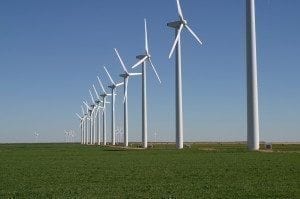It’s no secret the biggest barrier to widespread adoption of renewable energy technology is the absence of efficient, economical energy storage. After all, when the turbines aren’t spinning or the sun isn’t shining, the clean energy isn’t flowing. (Excluding less mainstream technologies like tidal generation, geothermal and *gasp* nuclear).
 Perhaps the most prevalent argument against widespread alternative energy generation capacity development is the reality of sporadic generation and the impact of this on the grid. If not for energy storage limitations, statistics like this one would turn more heads and convert more skeptics into believers.
Perhaps the most prevalent argument against widespread alternative energy generation capacity development is the reality of sporadic generation and the impact of this on the grid. If not for energy storage limitations, statistics like this one would turn more heads and convert more skeptics into believers.
In a recently published report by Harvard University researchers, a previously overlooked group of organic compounds called Quinones look to be very promising. Current storage technology mostly revolves around flow batteries. Simply put, flow batteries make use of two different chemical components that are dissolved in a liquid solution, separated by a membrane. Flow batteries are seen as a likely component of the future high-capacity, clean energy grid because of their ability to store great deals of energy in liquid form, while closely controlling the flow of electricity based on the amount of contact between the two chemicals.
Quinones promise to be an inexpensive option; expense being one of the two principle barriers to high capacity clean energy storage. Until now, the grid has met varying demands by diversifying energy generation. That is, thousands of power plants, all connected by the grid, scaling up or down their generation based on need. A system reliant on wind and solar would not have this feature without immense storage capacity.
The second principle barrier to high capacity, clean energy storage thus far has been limited by the availability of the rare earth metals needed to constitute the battery. Quinones are widely available, very stable and safer than conventional battery technologies.
Plus an added perk: building a flow battery using quinones would require basic industrial equipment instead of specialized, hard-to-find parts. Additionally, in order to expand a flow battery’s capacity, additional liquid tanks need to be added. Contrasted with current technologies which require total retrofits at great expense in order to expand capacity.
The bottom line: quinones, in combination with advancements in flow battery technology, could open the door to cheap, safe, reliable massive energy storage. Passing this hurdle could finally give alternative energy generation the economic and practical boost it needs for widespread adoption.


